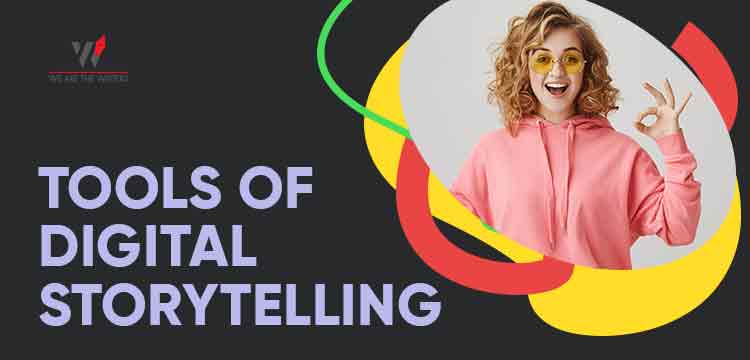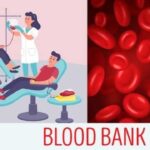Storytelling has outgrown the boundaries of its conventional description. There are now a lot of connotations that have come with it. The most talked about and popular method of creating digital content is Digital Storytelling.
Table of Contents
What is Digital Storytelling ?
Digital storytelling describes a simple, creative process through which people share stories made by them on digital platforms. Digital storytelling uses multimedia tools to bring narratives to life. These are usually films predominantly using images, audios and animation.
The digital content can then be streamed on the web or broadcast on television. This newer form of telling stories emerged with the advent of accessible media production techniques. Digital storytelling is a combination of techniques that develop literary and storytelling skills with an introduction to basic Information and Communication Technology. It is the process by which diverse people share stories made via using media tools.
In a narrative structure digital stories are multimedia presentations that combine a variety of communicative elements. These elements can be images, videos, animation, audio, etc. It is an extremely versatile method of storytelling where most of the control is in the hands of the creator and the storyteller. The content creation in this method is creator centric and is completely spun by the storyteller.
Telling a digital story combines a narrative, whether it be fiction or nonfiction, personal or general, and digital media. Digital media includes imaging, video, sound and all other forms of media then can be portrayed visually, the most simple of digital stories can even be a power point. The point is to convey a message through imagery, which mostly can be more effective then if just conveyed through sound or text.
Suggested Blogs:
- The Art of Storytelling | The evolution story of Storytelling -2022
- What is story writing | 7 useful tips for writing a story
- Master novel writing and convey a great story in 2022
Elements of Digital Storytelling

There are several elements of Digital Storytelling which are often cited as a useful starting point as you begin working with digital stories. These elements are developed and disseminated by The Center for Digital Storytelling (CDS) in Berkeley, California.
1. Point of View
The narrator’s point of view is the primary element that makes up a story. The main point of the story and the perspective of the creator is like the tread which sews the whole story together.
2. A Dramatic Anticipation
There should be something that a viewer would want to stay for. A key question keeps them on their toes, while retaining attention. Make sure the anticipation is answered by the end of the story for a wholesome experience of storytelling.
3. The Choice of Content
Your choice of content will decide reception of your content. It should be aligned to what the audience is demanding or what is relevant or both. The serious issues that come alive in a personal and powerful way and connect the audience to the story can decide the fate of the story.
4. Your Voice
A way to personalize the story to help the audience understand the context is using your own voice – as voice overs. The narration that will accompany your videos can strike an instant and powerful connection with the audience if it’s in your own voice and not a robotic voice.
5. Soundtrack
Music or other sounds that support and embellish the story can really take it to the top. The background score is something that can make or break your content.
6. Economy of the Story
It’s good to have intricate entails in your story, it provides layering and anticipation; hence the attention is retained. But you don’t want to fill the story only with details because it takes the fun out of the story and brings boredom.
7. Pacing
Your story should move at a pace that is easy for the audience to sync with. Neither very fast nor stagnated. In order to have a smooth connection and the attention during the story, provide a pace that overloads the audience.
Suggested Blogs:
- Content Development – The No. 1 treatment of Content
- Let’s learn content writing for free in 2022
- Who is a Content Creator ? Why is content important
Types of Digital Stories
There are three main types of Digital Stories:
- Personal Narratives
The most popular form of digital storytelling are personal narratives. These stories recount events in your life. They reflect on moments of change within our lives, and to showcase our journeys of discovery.
- Historical Documentaries
Stories that examine dramatic occurrences that help us understand events in the past are historical narrative storytelling.
It requires conducting research and processing a large amount of information into a brief and compact narrative that forms an argument or presents a perspective for the story.
- Content / Instructional Stories
These are the stories that inform or instruct the viewer about a particular concept or practice.
It delivers instructional content in areas such as culture, mathematics, science, language arts, medicine, general awareness and more.
Tools of Digital Storytelling

Since a digital story is only possible to create with the help of technology, it requires some specific tools. There are different equipment and softwares that help in the creation and then the editing of the story.
Equipment and Software
Equipment
- An adjustable green screen
- Canon Rebels, including a 360 degree lens
- Tripods
- Ipads
- Professional lighting including 1 light box,
- A variety of camera lenses
- Shotgun microphone and mic packs (to record individual or multiple subjects)
- 1 Mac Recording Station
- Shure MV5 microphone
- Condenser Microphone
Video software
- Adobe Premiere Pro CC
- Adobe After-Effects CC
- Adobe Media Encoder CC
- Adobe Prelude CC
- Apple iMovie
Design software
- Adobe Animate CC
- Adobe Fireworks CS6
- Adobe Illustrator CC
- Adobe InDesign CC
- Adobe Muse CC
- Adobe Photoshop CC
- Apple Pages
- Apple KeyNote
- Adobe Dreamweaver CC
- Adobe Lightroom CC
- Adobe Muse CC
- Microsoft Office
Audio software
- Ableton
- Adobe Audition CC
- Audacity
- Apple GarageBand
- Apple Logic Pro
Suggested Blogs:
- BEST CONTENT CREATION TOOLS
- Call to Action | CTAs Importance in Business website -2022
- 26 Best Graphic Design Software
Steps to create a digital story
Creating a digital story is an engaging way to share information that requires creativity, self-direction, and experimentation with new technologies.
Steps to create a Digital story
Step 1: Planning your digital story- Brainstorming the idea
Digital Stories should not exceed 5 minutes in length, which makes it a very compact form of storytelling. To make the most out of it is important that the topic of your story is well focused and scoped appropriately.
When planning your digital story, consider the following:
- What type of Digital Story do you want to create (personal, historical, or instructional)?
- What is the idea central to your story, the insight?
- Brainstorm ideas about the story’s potential
- Research your topic. And give the results precedence over your own opinions
- Find credible sources to help you to more thoroughly understand your topic and provide relevant context
If it’s a personal story:
- Ask questions of your friends and family
- read journals or letters
- look for photographs or anything else that may bring more depth to your memories.
Step 2: Drafting your script and storyboard- Laying the groundwork
Scripting and storyboarding will help you smoothen both the narrative and the visuals for your story which will make the production phase easier.
Good amount of descriptive paperwork will save you from wasting time and resources while creating content. Remember the mantra, garbage in, garbage out.
Writing tip: To establish a connection with your audience, write your script like you are speaking to a friend to make it sound more interactive and casual rather than academic and one-sided.
Step 3: Creating media content
When your script and storyboard are complete, in order to strengthen your story with different elements ike sound and imagery, you may need to:
- Record a voiceover
- Gather or create images or video clips
- Create or find music and sound effects
When creating your own media, start to visualize what your story looks and feels like.
Step 4: Putting it all together
Gather all the media that you have created and bring it into whatever tool you use to run post production (editing) on.
- Place your audio voiceover, images, video clips and other media together in the different timelines of the video editor.
- Don’t forget to include a credits slide to provide proper attribution to the original creators of any kind of media that you used.
- Once you’re happy with the end video, you can export it and share on different platforms.
Editing Tip: Be open to changes.
Sometimes the way your imagination creates something is different from how it will actually turn out to be. Video making requires that you rethink, revise, and make changes as you move forward. Allow yourself to play and don’t be afraid to let go of what doesn’t work. You must have a strong suit of improvisation.
What is a Storyboard? | Digital Storytelling
A storyboard is a sketch of how to organise a story and its list of contents. It is a chronological series of images with narrations or description of each image. It can also be said to be the graphical representation of all the elements of the digital story idea.
It is important because it shows how the story will flow, before actually creating the story. It doesn’t have to be complex, use of clip arts and pictures from the internet will be sufficient to make a storyboard that works well.
A storyboard is made up of several elements that map the flow of the story:
- Pictures
- Words
- Music
- Video
It helps the digital storytellers to picture the entire story and generate new concepts and designs.
Who is a Digital Storyteller ?

A digital storyteller can be anyone who documents life experience, ideas or feelings through the use of stories created by digital media. Accessible media production technique hardware such as digital cameras and digital voice recorders allow individuals to share their stories over the Internet on platforms like YouTube, Vimeo, WeVideo, etc in the form of podcasts, videos and other digital content.
You can think of digital storytelling as the modern development of the ancient art of storytelling, now intertwined with digitized still or moving images paired up with audio.
The use of digital storytelling is defined by the different purposes that method can be used for, it is a proven method to express creativity, develop relevant skills and develop confidence and build self-esteem. It allows participants to:
- Tell their own stories
- Learn digital media skills
- Build confidence and self-esteem
Wrapping up
The wonderful thing about telling a digital story is that there really are no rules. However, there are certain guidelines that are tried and true over time that make up better stories.
When you want to capture the attention of your audience, it is important to be passionate about the themes and characters when telling the story.
Some of the best stories begin with your own personal insights in order to find an interesting and profound dramatic story.





 WhatsApp
WhatsApp